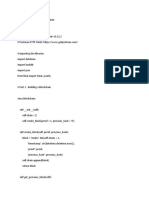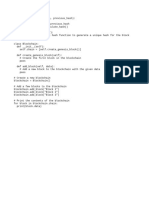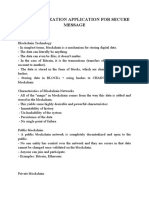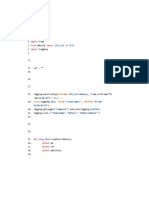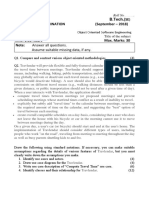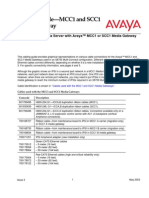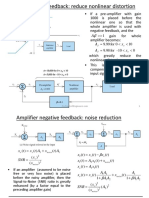0% found this document useful (0 votes)
9 views17 pagesWeek Block 3
The document outlines a series of Python scripts simulating various blockchain functionalities, including Bitcoin transactions, double-spending attacks, and proof-of-work mechanisms. It details the creation of transactions, blocks, and a blockchain, along with methods for verifying transaction authenticity and handling conflicts in mining. Additionally, it discusses the impact of modifying proof-of-work difficulty on block mining time.
Uploaded by
crazy babloo india ka sab ka smartCopyright
© © All Rights Reserved
We take content rights seriously. If you suspect this is your content, claim it here.
Available Formats
Download as DOCX, PDF, TXT or read online on Scribd
0% found this document useful (0 votes)
9 views17 pagesWeek Block 3
The document outlines a series of Python scripts simulating various blockchain functionalities, including Bitcoin transactions, double-spending attacks, and proof-of-work mechanisms. It details the creation of transactions, blocks, and a blockchain, along with methods for verifying transaction authenticity and handling conflicts in mining. Additionally, it discusses the impact of modifying proof-of-work difficulty on block mining time.
Uploaded by
crazy babloo india ka sab ka smartCopyright
© © All Rights Reserved
We take content rights seriously. If you suspect this is your content, claim it here.
Available Formats
Download as DOCX, PDF, TXT or read online on Scribd
/ 17





















